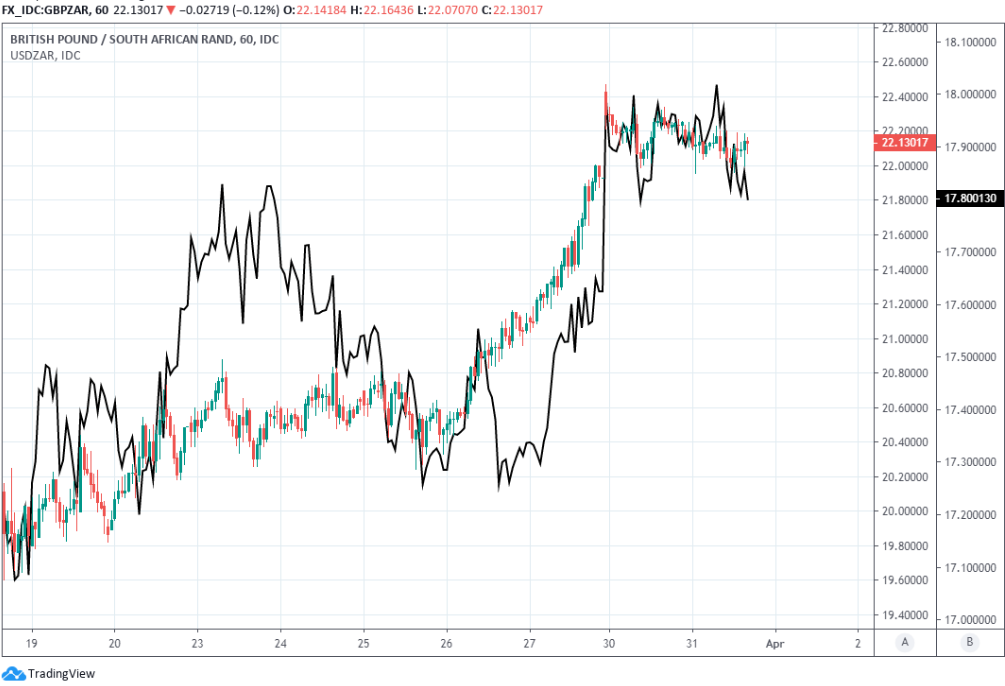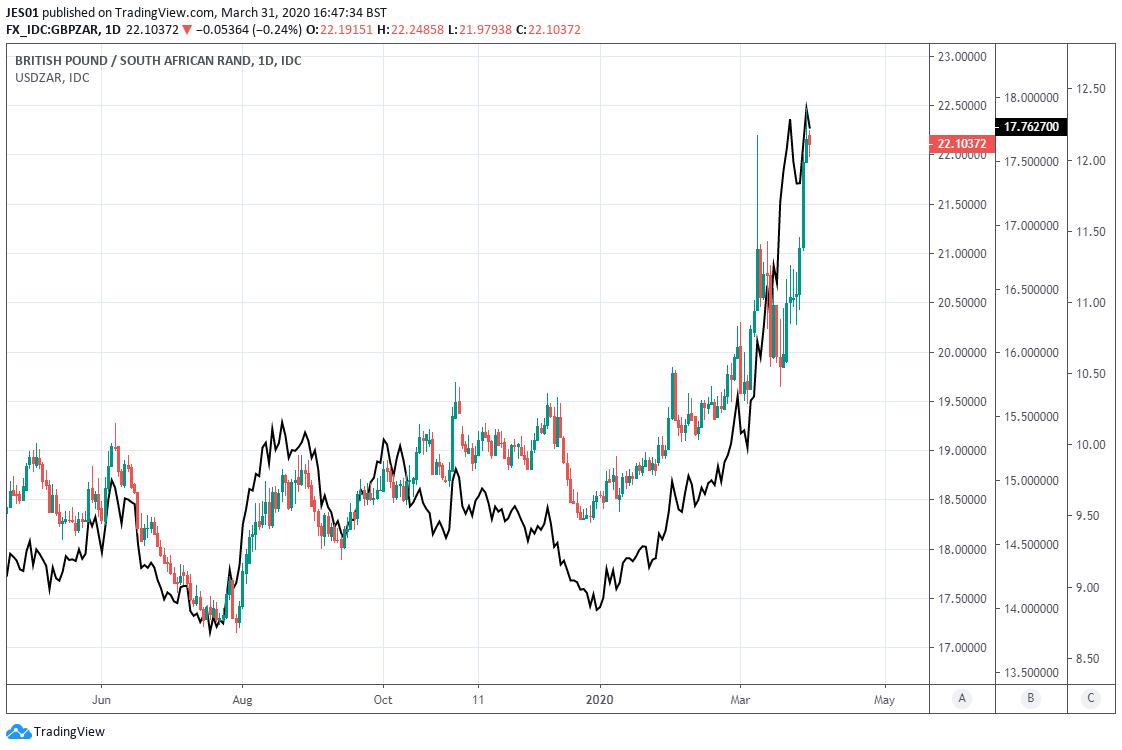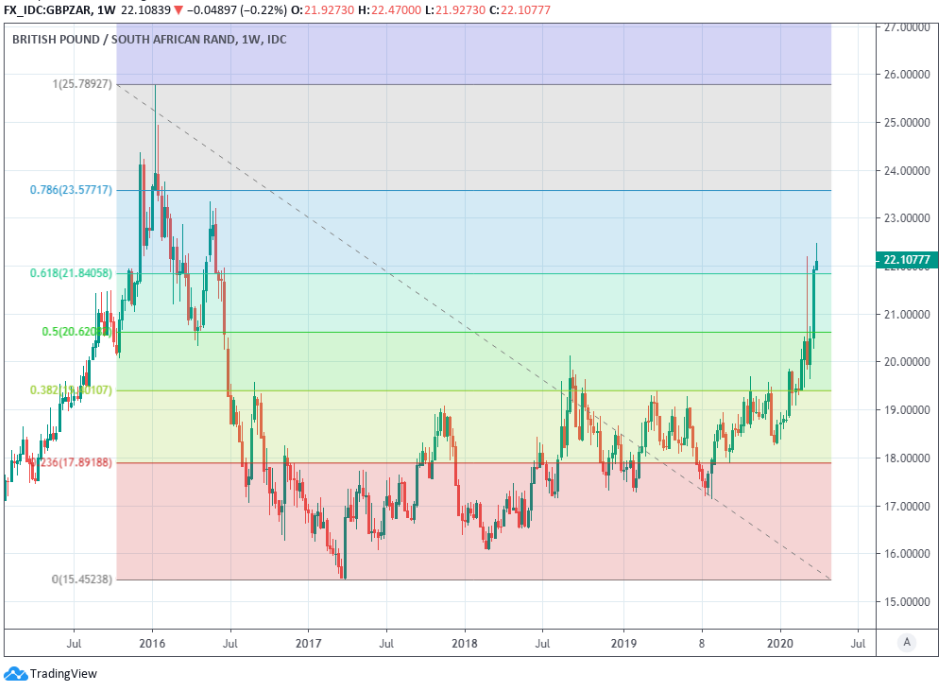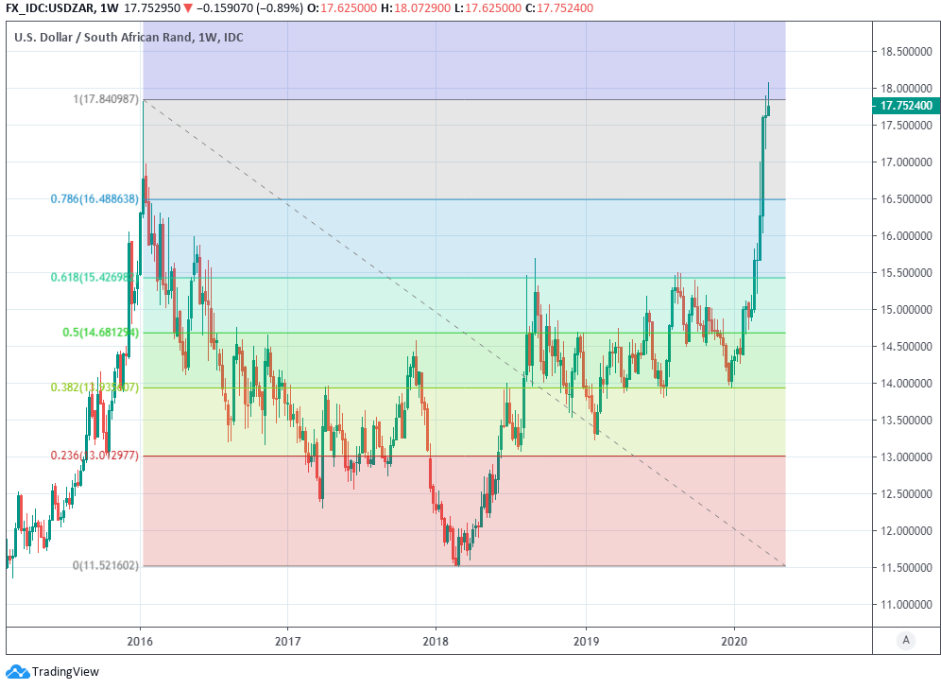South African Rand Steadies as Global Mood Improves but Recovery May a Distant Prospect
- Written by: James Skinner

Image © Government of South Africa, reproduced under CC licensing
- GBP/ZAR Spot Rate: 22.14 -0.21% on publication
- Indicative bank rates for transfers: 21.37-21.52
- Indicative broker rates for transfers: 21.81-21.94 >> find out more about this rate.
The South African Rand has stabilised this week after Friday's credit rating downgrade from Moody's, although with a domestic coronavirus outbreak seen weighing on the already-bruised economy for months more, a sustained recovery could remain a distant prospect for a while yet.
South Africa's Rand rose in a risk-on market that saw all safe-havens lose ground to higher 'beta' counterparts Tuesday, as stock markets and commodity prices rebounded in response to further signs that coronavirus is spreading at a slower pace in some of the major hotspots. The number of new coronavirus cases ticked higher in many European countries Monday but only after several days of steady declines that prompted hopes of a 'peak' in the outbreak.
Italy, Europe's epicentre, saw three back-to-back days in which the number of new coronavirus infections was lower than in the previous day heading into Monday while similar occurances were observed in Spain and France. The ebb of momentum behind the infection has encouraged markets to believe that 'lockdown' measures taken in many economies may now be bearing fruit.
Some analysts also cited speculation over a possible fourth package of U.S. government fiscal support for the world's largest economy as also being behind the improved mood in the markets although whatever the driver of price action, it's enabled the Rand to continue what has been a resilient performance since Moody's cut South Africa's local and foreign currency long-term credit ratings from 'investment grade' to 'junk' after the market closed last Friday.
"The rand and the peso, which bore the brunt of EM selling yesterday following their recent sovereign downgrades, will continue to test key resistance levels. The local unit’s flirtation with 18.00 was barely impacted in overnight trade by the President’s earlier remarks," says Nema Ramkhelawan-Bhana at Rand Merchant Bank. "A break of 18.08 to 18.10 will shift us into an entirely new world of pain, but the unit will require a firm catalyst to nudge it weaker."
Above: Pound-to-Rand rate shown at hourly intervals alongside USD/ZAR rate (black line).
Moody's, one of two agencies that must rate South Africa as an 'investment grade' borrower for the country to remain in the FTSE World Government Bond Index, cut its rating to Ba1 (junk) from Baa3 and maintained a negative outlook for the rating Friday. The agency cited a "continuing deterioration in fiscal strength and structurally very weak growth" that it says is unlikely to be remedied by current government plans.
This sets the government's bonds up for an end-April exclusion from the coveted FTSE index which will force international fund managers who benchmark to the barometer to sell their holdings. Foreign holdings of SA government debt were R316bn (£15 bn) in 2019 according to the statistical annexe included by Treasury in the February budget update, and it's possible a large portion of this could now be sold on the open market.
"The rand and bonds are already discounting the Moody’s downgrade. However, there will be some reaction this week as well as at the time of WGBI expulsion (pushed out to end-April, from end-Mach)," says Thanda Sithole, an economist at Standard Bank. "As commodity prices will remain low amid the global growth slowdown and specifically that of China, commodity-exporting countries’ currencies will take a further knock."
Above: Pound-to-Rand rate shown at daily intervals alongside USD/ZAR rate (black line).
Fears over an eventual downgrade had been building for years but weighed increasingly on the Rand through 2019 and early 2020 as it became clear that new political leadership alone would not be a panacea for the country's deep structural problems, which include endemic unemployment and crumbling infrastructure that requires much investment to support the fullfilment of the country's economic potential. Progressively worse Treasury projections had suggested in recent budgets that the high and still-rising deficit would go on adding to the debt-to-gdp ratio even before the economy fell into its second recession in as many years back in the final quarter of 2019.
That recession was already expected to endure through the first-quarter but the incursion of coronavirus into South Africa and the resulting 'lockdown' of the population now threatens to impose a brutal full-year contraction on the economy for 2020, and may have been a factor in Moody's Friday decision to go ahead with a downgrade after years of warning that one could be in the pipeline. Standard Bank's Sithole forecasts South Africa's economy will shrink by -5% this year as a result of the virus and government efforts to contain it.
There were 1,326 confirmed coronavirus infections in South Africa as of Monday, the National Institute of Communicable Disease says, up from 402 one week ago and from zero at the beginning of March. President Cyril Ramaphosa declared a national emergency last week as a result of the outbreak, placing the country into the same kind of draconian 'lockdown' seen previously in China and now in many European countries in the hope of slowing the spread of the virus. But the resulting economic contraction could weigh on the Rand in the months ahead and so too could related demand for safe-havens like the Dollar.
Above: Pound-to-Rand rate at weekly intervals, breaking above 61.8% Fibonacci retracement of January 2016 downtrend.
The improved global market mood has helped to walk the Rand back from fresh record lows against the Dollar this week while preventing the Pound-to-Rand rate from building on earlier gains that had lifted the British currency to its highest level since the Brexit referendum of 2016. The market's appetite for risk assets like the Rand will be a key influence on both the USD/ZAR and GBP/ZAR rates going forward, with any deterioration in risk appetite likely serving to drive the South African unit toward new lows.
Sterling is up 19.2% against the Rand so far in 2020 despite it also falling by high single digits against other major currencies like the Dollar, Yen, Euro and Swiss Franc. This has taken the Pound-to-Rand rate comfortable above the 61.8% Fibonacci retracement of the January 2016 downtrend and subject to a close above that level this week, given it an opportunity to target the 78.6% retracement located up at 23.57 in the months ahead.
Meanwhile, the USD/ZAR rate has set new all-time highs amid near-unprecedented demand for the Dollar and is widely expectted to retain an upside bias going forward. However, it's yet to break decisively above the 17.84 earlier all-time high on a weekly closing basis and so long as it fails to do that, there could remain a prospect of a Rand recovery or at least consolidation above its recent lows even if such a thing is only short-lived.
"Around the 18.0000 mark the cross may soon lose upside momentum but while it remains above the March 9 high and the March 25 low at 17.1793/16.9932 on a daily chart closing basis, immediate upside pressure should be maintained. Below this support zone sit the March 13 low at 16.0205 as well as the early March high at 15.8588," says Axel Rudolph, an analyst at Commerzbank.
Above: USD/ZAR rate at weekly intervals, testing the 100% Fibonacci retracement of January 2016 downtrend.








